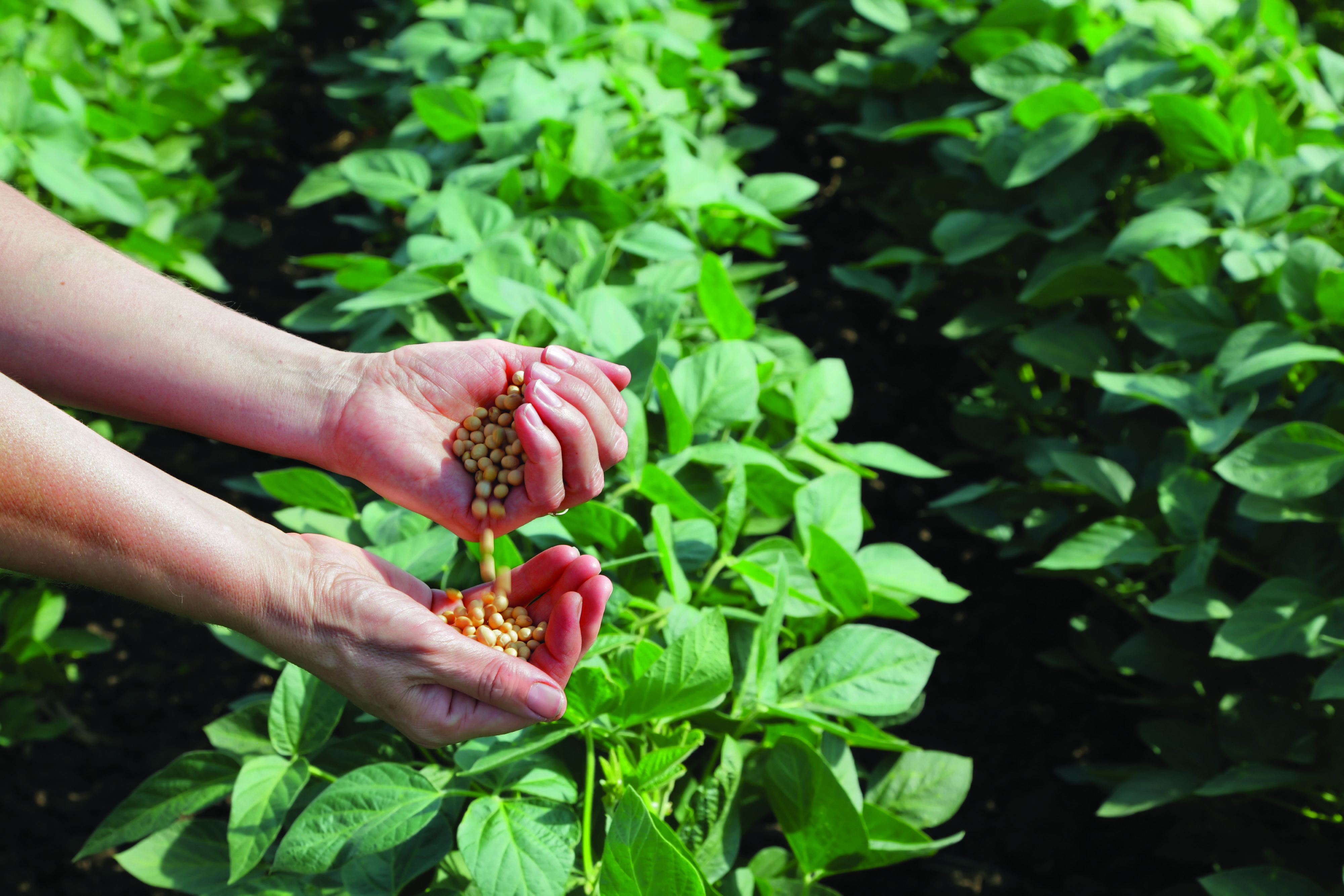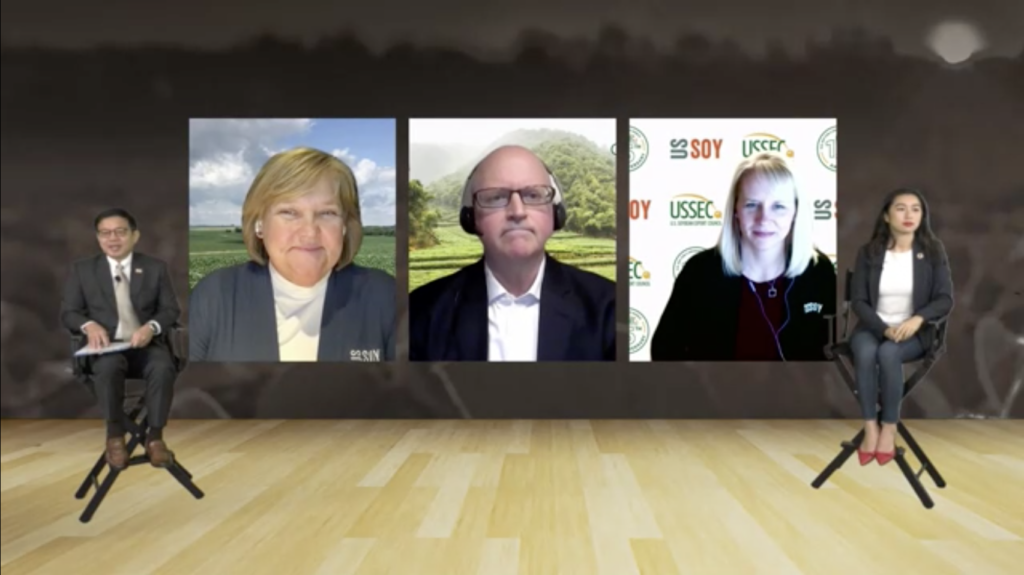How Can Food Production Practices, Technology and Big Data Shape the Needs of a Growing Population?
- Category:
- Sustainability
- Virtual Events


The U.S. Soybean Export Council (USSEC) recently welcomed participants virtually to the S.E. Asia (SEA) Food and Ag Sustainability Symposium, focusing on the key factors driving the urgency for sustainability. Experts joined in a panel discussion moderated by USSEC’s Tim Loh, Regional Director for SEA, focusing on food production.
Sustainability in the food system starts on farms such as those of U.S. soybean farmers, said Abby Rinne, USSEC Director of Sustainability.
“Future-proofing our food supply systems is focusing on continuously improving what we’re doing,” Rinne said. “Farmers are doing that every single year in the United States. Making sure our product is produced in a sustainable manner means looking at ways to improve production practices and improving the environment.”
Since 1980, U.S. Soy farmers have made great strides in the realm of sustainability. They have reduced greenhouse gas emissions by 42%, reduced energy use by 45%, improved water use efficiency by 61%, improved land use efficiency by 47% and improved soil conservation by 35%.
Farmers in SEA have similar priorities once U.S. Soy makes it to their farms.
“Here in Asia, we are home to the greatest number of smallholder farms and home to the smallest-size farms in the world,” said Duke Hipp, Director of Public Affairs and Strageic Partnership for CropLife Asia. “You can’t capture that narrative without talking about the challenges they face.”
Hipp shared that more than 68% of these farmers in a recent CropLife Asia study indicated the impact of climate change as a key challenge facing their operations.
“I think the more we can do to empower and enable them to do more with less – fewer inputs, less impact – the better.”
Internationally, the productivity of a farmer goes beyond numbers and ROI. It includes sustainable considerations such as nutrients and justice.
“Productivity today includes safety, quality, and farmers’ access to market,” said Yvonne Zhang, SEA Risk Advisory Climate and Sustainability Leader for Deloitte SEA. “How do we empower farmers along the Asian sea line to ensure they prioritize quality, reduce waste, minimize lasting impacts on water, air and the biome? Productivity encompasses more than costs and premiums.”
April Hemmes, an Iowa soybean farmer and director on the United Soybean Board, points to infrastructure as a way to support that productivity.
“In my trips to SEA, I’ve noted that end users are eager for U.S. Soy because they’ve seen what it does in feed trials and how much better value they get from it due to the high-quality feed,” Hemmes said. “But, they might be small stakeholders. Forming coalitions or finding ways for them to buy larger quantities to get my soybeans to their farms cheaper is one way we future-proof our food system. Getting my sustainable U.S. Soy to SEA economically has to be a priority.”
This panel discussion and other recordings from the event are available on demand. Learn more about U.S. Soy farmers’ sustainability efforts at ussec.org.
- Partially funded by U.S. soybean farmers and their checkoff.